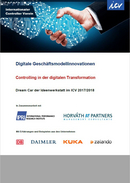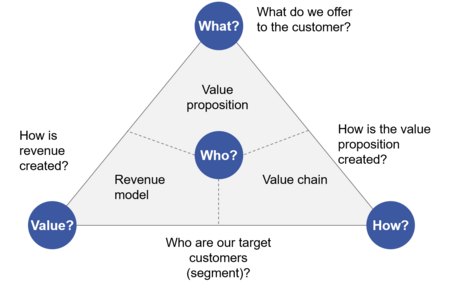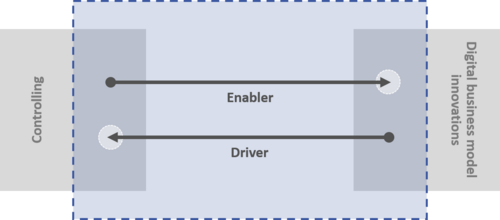Digital Business Model Innovations
The focus of the Think Tank in 2016 and 2017:
Digital Business Model Innovations

Dream Car of the ICV's Think Tank in 2017/2018:
Digital Business Model Innovations | Controlling in the Digital Transformation
Digitale Geschäftsmodellinnovationen | Controlling in der digitalen Transformation
Digital Business Model Innovations
The use of digital technologies (e.g. high-performance computers, broadband Internet, etc.) can lead to significant changes in the core business model components "customers", "utility promises", "value chain" and "yield mechanics" Gassmann et al., 2013). In the implementation of digital business model innovations, several business model components are usually affected at the same time. In the following, various application examples will show examples of the fundamental changes that can result from the use of digital technology in individual business model components.

- Business model component "customer"
Customers are the focus of business models. For example, the company focuses on which customer groups (e.g. B2C or B2B) focuses the company. In this context, it is also defined how these customer groups should be addressed and how the customer relationships should be designed. The company Amazon has made the international trade popular by the use of digital technologies. With regard to the customer relationship, personal customer contact is dispensed with in comparison to "conventional" retail. Today, Amazon is among the largest bookseller in the world, without having opened a single shop.
- Business model component "benefit promise"
Within the scope of the business model component "benefit promises", it is regards the products and / or services offered by the company. The use of digital technologies makes it possible to replace physical by dematerialized products. An example of this is the MP3 technology and the associated offer of digital music. With iTunes the company Apple has implemented a business model, in which music is sold without data carriers (CDs, records etc.). For a fee, customers load individual music tracks via iTunes on their iPhone or iPod. Apple has thus changed the music business and has become the largest music retailer without having sold a single CD or record.
- Business model component "value chain"
The business model component "value chain" encompasses all the activities, processes and key resources required for the performance or implementation of the business model. In order to gain access to key resources that the company itself cannot provide, strategic partnerships with other companies are often concluded or investments are made in start-ups. Daimler AG, together with Europcar, founded the company car2go to enter the free-floating car-sharing business. The entire car renting process is implemented by various digital technologies. For example, the customer's smartphone is a central interface and serves as an information, booking and payment device.
- Business model component "profit mechanics"
Profit mechanics include the financial aspects of the business model. This includes both the cost structure and the sources of income. In particular with regard to sources of income, new concepts can be implemented through the use of digital technologies. Rolls Royce (manufacturer of turbines for civil and military aviation) has introduced the "pay-per-use" concept. Customers pay a fee for every hour the engine runs, rather than the engine itself. In order to be able to offer such a concept, Rolls Royce records the operating data of the engines via sensors. These are then collected and evaluated centrally.
The role of the controller
The implementation of digital business model innovations, which change industries within a very short time, requires agility. This applies both to the business model itself and to the controlling department. In addition, corporate culture is crucial for the development and implementation of digital business model innovations. At the same time, two important perspectives have to be taken into account from a controlling point of view: On the one hand, the controlling acts as a promoter for the development of digital business model innovations, on the other hand the implementation of such business model innovations can be see as a driver for the adaptation of controlling instruments and methods (see Fig. 2).

